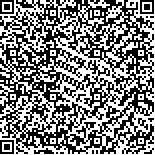| This article has been:Browse 1518Times Download 2614Times |

scan it! |
|
|
| DOI:10.13522/j.cnki.ggps.2020063 |
|
| Using Hyperspectral Imagery and GA-PLS Algorithm to Estimate Chemical Oxygen Demand Concentration of Water in River Network |
|
CAI Jiannan, LIU Hailong, JIANG Bo, HE Tianhui, CHEN Wenjie, FENG Zhiwei, LI Zhuolin, XING Qianguo
|
|
1.Zhongshan Environmental Monitoring Station, Zhongshan 528403, China; 2. Zhongshan Ecology and Environmental Agency, Zhongshan 528403, China; 3. Key Laboratory of Coastal Environmental Processes and Ecological Remediation, Yantai Institute of Coastal Zone Research, Chinese Academy of Sciences, Yantai 264003, China
|
| Abstract: |
| 【Objective】The hyperspectral remote sensing has proven potential to monitor water quality, but issues such as data redundancy and susceptibility to environmental variation could affect its accuracy and reliability. The genetic algorithm-partial least squares (GA-PLS) algorithm with a function to select sensitive spectral variables could resolve these problems. The GA-PLS algorithm was mainly used in retrieval of the optically active parameters such as transparency, chlorophyll-a, suspended matter and turbidity in surface water bodies. The purpose of this paper is to combine it with hyperspectral retrieval model to estimate chemical oxygen demand (COD) concentration of water in the river network in the Pearl River estuary.【Method】Hyperspectral imageries and COD concentration of 146 samples taken from water bodies in the Pearl River estuary were collected, and the characteristic bands of the hyperspectral reflectance data were screened using the GA-PLS algorithm to retrieve the COD concentration. The differences in retrieval accuracy between different band combinations were compared.【Result】The COD concentration retrieved from the hyperspectral imageries based on the GA-PLS algorithm is more accurate than that calculated using the full-spectrum PLS model. The minimum RMSEP of the method was 4.887 mg/L, 11.4% less than that of the full-spectrum PLS model. Using 74 filtered bands, accounting for 2.9% of the full bands, the model was still stable and accurate. Some characteristic bands obtained by the GA-PLS algorithm have physical interpretation, indicating that the screening results were rational.【Conclusion】The GA-PLS algorithm can be used to screen characteristic bands from the hyperspectral imageries to reduce the number of data and simplify the model as a result. It can accurately estimate COD of water in river networks. |
| Key words: hyperspectral imagery; genetic algorithms; partial least squares; chemical oxygen demand; river network waters |
|
|